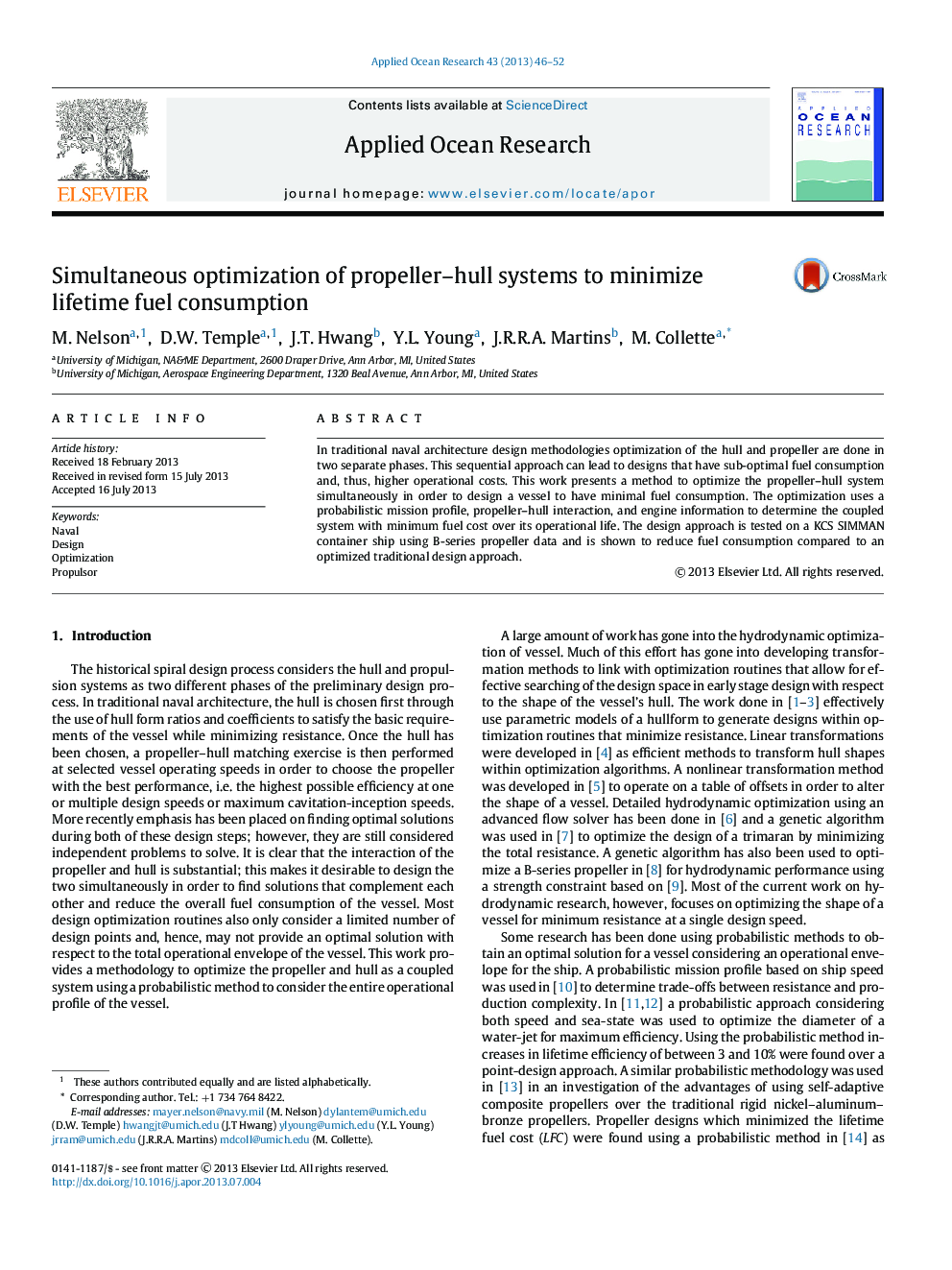| Article ID | Journal | Published Year | Pages | File Type |
|---|---|---|---|---|
| 1720108 | Applied Ocean Research | 2013 | 7 Pages |
•Simultaneous design of propulsor and hull has the potential to improve performance of the coupled system.•A method is proposed to optimize the propeller and hull for a vessel simultaneously using an SQP optimization algorithm.•The method is used to optimize a KCS SIMMAN container ship and a B-series propeller to minimize the lifetime fuel consumption.•By utilizing the proposed method a savings of over 10% is realized in lifetime fuel consumption over a design found using a sequential approach.
In traditional naval architecture design methodologies optimization of the hull and propeller are done in two separate phases. This sequential approach can lead to designs that have sub-optimal fuel consumption and, thus, higher operational costs. This work presents a method to optimize the propeller–hull system simultaneously in order to design a vessel to have minimal fuel consumption. The optimization uses a probabilistic mission profile, propeller–hull interaction, and engine information to determine the coupled system with minimum fuel cost over its operational life. The design approach is tested on a KCS SIMMAN container ship using B-series propeller data and is shown to reduce fuel consumption compared to an optimized traditional design approach.
